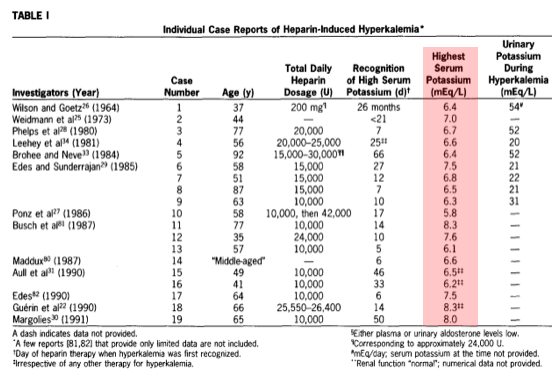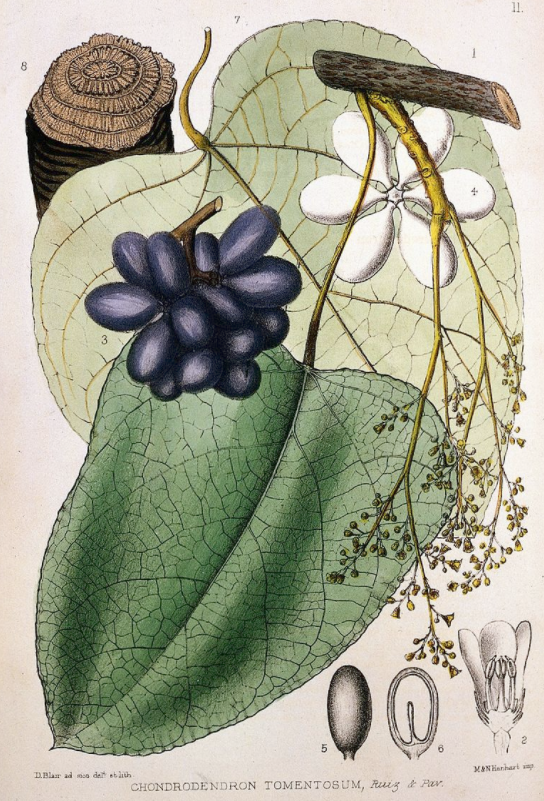
1/🧵
Ever wonder why cutting onions makes you cry?
Something must be released that causes this irritating response, but what?
It turns out that cutting an onion jumpstarts multiple chemical reactions, in the air and right in front of your eyes.
#medtwitter #tweetorial 🧅
Ever wonder why cutting onions makes you cry?
Something must be released that causes this irritating response, but what?
It turns out that cutting an onion jumpstarts multiple chemical reactions, in the air and right in front of your eyes.
#medtwitter #tweetorial 🧅

2/
💡Onions are actually one of the oldest cultivated crops, first entering the human diet ~5,000-7,000 years ago.
Ancient Egyptians worshipped onions (evoked eternity) and ancient Indians, Greeks, and Romans believed that they had medicinal properties.
onions-usa.org/all-about-onio…
💡Onions are actually one of the oldest cultivated crops, first entering the human diet ~5,000-7,000 years ago.
Ancient Egyptians worshipped onions (evoked eternity) and ancient Indians, Greeks, and Romans believed that they had medicinal properties.
onions-usa.org/all-about-onio…

3/
But as anyone who has ever cut or chopped an onion knows, the simple act of chopping them causes almost immediate eye irritation and tearing.
Why?
But as anyone who has ever cut or chopped an onion knows, the simple act of chopping them causes almost immediate eye irritation and tearing.
Why?

4/
First we need to confirm what occurs at the cellular level when an onion is cut.
🔑It turns out that with damage to the onion's cell walls, a specific sulfur compound is released into the air:
S-alkenyl cysteine sulfoxide
pubmed.ncbi.nlm.nih.gov/23443367/
First we need to confirm what occurs at the cellular level when an onion is cut.
🔑It turns out that with damage to the onion's cell walls, a specific sulfur compound is released into the air:
S-alkenyl cysteine sulfoxide
pubmed.ncbi.nlm.nih.gov/23443367/

5/
Along with S-alkenyl cysteine sulfoxide, an enzyme called allinase also gets released into the air from the onion.
Allinase converts the sulfoxide molecule into sulfenic acids.
💥This reaction occurs IN THE AIR, mind you.
pubmed.ncbi.nlm.nih.gov/23443367/
Along with S-alkenyl cysteine sulfoxide, an enzyme called allinase also gets released into the air from the onion.
Allinase converts the sulfoxide molecule into sulfenic acids.
💥This reaction occurs IN THE AIR, mind you.
pubmed.ncbi.nlm.nih.gov/23443367/

6/
Sulfenic acids happen to be very unstable and spontaneously rearrange to thiosulfinates.
Thiosulfinates give onions their pungent aroma/flavor and were once assumed be the source of onion-crying.
pubmed.ncbi.nlm.nih.gov/23443367/
Sulfenic acids happen to be very unstable and spontaneously rearrange to thiosulfinates.
Thiosulfinates give onions their pungent aroma/flavor and were once assumed be the source of onion-crying.
pubmed.ncbi.nlm.nih.gov/23443367/

7/
But it turns out that thiosulfinates, while the source of an onion's flavor, are not the source of eye irritation and crying.
In 1971, two chemists isolated a tear-inducing substance from onion extract, a so-called "lachrymatory factor".
pubs.acs.org/doi/abs/10.102…
But it turns out that thiosulfinates, while the source of an onion's flavor, are not the source of eye irritation and crying.
In 1971, two chemists isolated a tear-inducing substance from onion extract, a so-called "lachrymatory factor".
pubs.acs.org/doi/abs/10.102…

8/
🔑The lachrymatory factor they found is actually propanethial-S-oxide.
It also derives from sulfenic acids, but requires enzymatic conversion by a second enzyme called lachrymatory factor synthase (LFS).
pubmed.ncbi.nlm.nih.gov/12384686/
🔑The lachrymatory factor they found is actually propanethial-S-oxide.
It also derives from sulfenic acids, but requires enzymatic conversion by a second enzyme called lachrymatory factor synthase (LFS).
pubmed.ncbi.nlm.nih.gov/12384686/

9/
So we have established that the source of crying with onion cutting is propanethial-S-oxide, the lachrymatory factor.
How lachrymatory factor induces crying isn't well established but it seems to act as a direct corneal irritant.
iovs.arvojournals.org/article.aspx?a…
So we have established that the source of crying with onion cutting is propanethial-S-oxide, the lachrymatory factor.
How lachrymatory factor induces crying isn't well established but it seems to act as a direct corneal irritant.
iovs.arvojournals.org/article.aspx?a…

10/
Can we prevent this irritating effect?
Contact lenses block propanethial-S-oxide's access to the cornea via barrier action.
In this small study, contacts delayed the onset of irritation compared to no lenses after exposure to propanethial-S-oxide.
iovs.arvojournals.org/article.aspx?a…
Can we prevent this irritating effect?
Contact lenses block propanethial-S-oxide's access to the cornea via barrier action.
In this small study, contacts delayed the onset of irritation compared to no lenses after exposure to propanethial-S-oxide.
iovs.arvojournals.org/article.aspx?a…
11/
3 other potential strategies:
🧅 Goggles
🧅 Chilling onions may ⬇️ lachrymatory factor synthase activity and ⬇️ propanethial-S-oxide production.
🧅 Some believe that cutting onions under running water washes away propanethial-S-oxide as it forms.
pubmed.ncbi.nlm.nih.gov/3975593/
3 other potential strategies:
🧅 Goggles
🧅 Chilling onions may ⬇️ lachrymatory factor synthase activity and ⬇️ propanethial-S-oxide production.
🧅 Some believe that cutting onions under running water washes away propanethial-S-oxide as it forms.
pubmed.ncbi.nlm.nih.gov/3975593/

12/
Two final questions. First:
Garlic + scallions are closely related to onions, from the genus Allium.
Why don't we cry w/ chopping them?
💡Scallions + garlic can't make propanethial-S-oxide as they lack the lachrymatory factor synthase enzyme.
pubmed.ncbi.nlm.nih.gov/12384686/
Two final questions. First:
Garlic + scallions are closely related to onions, from the genus Allium.
Why don't we cry w/ chopping them?
💡Scallions + garlic can't make propanethial-S-oxide as they lack the lachrymatory factor synthase enzyme.
pubmed.ncbi.nlm.nih.gov/12384686/

13/
Finally, could an onion be modified to not produce propanethial-S-oxide, the lachrymatory factor?
An onion unable to ultimately produce propanethial-S-oxide should be non-pungent and "tearless".
Finally, could an onion be modified to not produce propanethial-S-oxide, the lachrymatory factor?
An onion unable to ultimately produce propanethial-S-oxide should be non-pungent and "tearless".
14/
A group in Japan did genetically transform an onion strain to lack lachrymatory factor synthase.
When cut, these onions cannot produce propanethial-S-oxide and do not cause crying.
They also apparently taste fairly bland.
ncbi.nlm.nih.gov/pmc/articles/P…
A group in Japan did genetically transform an onion strain to lack lachrymatory factor synthase.
When cut, these onions cannot produce propanethial-S-oxide and do not cause crying.
They also apparently taste fairly bland.
ncbi.nlm.nih.gov/pmc/articles/P…

15/
🧅Cutting onions ➡️ crying b/c of multiple enzymatic reactions in the air
🧅Allinase converts a released sulfoxide to
sulfenic acids, which rearrange to thiosulfinates
🧅Lachrymatory factor synthase converts thiosulfinates to propanethial-S-oxide (=source of onion-crying)
🧅Cutting onions ➡️ crying b/c of multiple enzymatic reactions in the air
🧅Allinase converts a released sulfoxide to
sulfenic acids, which rearrange to thiosulfinates
🧅Lachrymatory factor synthase converts thiosulfinates to propanethial-S-oxide (=source of onion-crying)
Thank you for reading and happy cooking!
Cc the legendary @Nigella_Lawson, who might find this interesting.
Cc the legendary @Nigella_Lawson, who might find this interesting.
Correcting a small error in the summary tweet:
Propanethial-S-oxide is derived from sulfenic acids by lachrymatory factor synthase, not from thiosulfinates.
Propanethial-S-oxide is derived from sulfenic acids by lachrymatory factor synthase, not from thiosulfinates.
• • •
Missing some Tweet in this thread? You can try to
force a refresh















